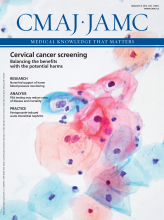My mom died in 1982. The cause of death was pneumonia, after surgery and radiation for a brain tumour. She’d made clear: “I want you to do everything possible to keep me alive.” Thinking back, I didn’t even know what I didn’t know. Much less what to ask. Or what could have been.
Fast forward to 2002, two decades after her death. I was producing patient education programs for television networks broadcasting in hospitals across North America. At the behest of our US hospitals, I created a short video about advance directives. Surveys with patients before and after watching proved the video met its objective to educate on the reason for, and importance of having an advance directive. In addition, 90% of respondents indicated “I need help completing.” Nowhere during this process did I consider there was more to dying wishes than do-not-resuscitate orders, cardiopulmonary resuscitation (CPR) and maybe intubations.
Then, in 2009, I began my foray into social media. Already LinkedIn, I’d flirted with Facebook. But it was Twitter that opened my eyes to a major gap in end-of-life knowledge. On weekly hour-long tweetchats, doctors, nurses, clergy, social workers, psychologists, researchers and educators shared their pain, passion and experiences in their mission to help the elderly and terminal have a peaceful, dignified end of life: #EOLchat (end of life) #HPM (hospice and palliative medicine) #DWDchat (death with dignity).
Flummoxed at first by much of the terminology (code, partial code, Dx, Tx), I summoned courage and apologized for my ignorance. To my surprise and delight, my “real person’s” request for clarification was greeted with enthusiasm: “TY: need 2 b reminded that pts need help w jargon.” What a gift! I had my own personal multidisciplinary consultants answering my queries — often with links to research. I asked: “Do you think we [real people] know about CPR mostly from TV?” Presto: links to studies.1 Then came a study showing surrogate decision-makers suffer from post-traumatic stress disorder.2

Image courtesy of © 2013 Thinkstock
My social media life evolved to include blogs, forums and videos, such as one on geripal.org, which reveals the heartache of two daughters with different hopes and perceptions of their dying mother’s wishes. There are also Facebook groups, such as the one for those with implantable cardiac devices (ICDs) where I learned the life-saving electrical shocks ICDs deliver to hearts in otherwise healthy bodies are nasty and upsetting at life’s end.3
What I am learning through social media is that a “good death” is often fraught with complexities and conundrums, conflicts and confusion, intricacies and nuances, options and issues. The more I learn, the more I realize why it’s impossible for real people to effectively heed the constant cry I hear from dedicated health care professionals: “If only people talked about it more, so much grief could be avoided.” The thing is, we don’t know enough to know where to start, what to ask and what to consider. Not one other “real person” I spoke to knew how much they didn’t know.
This realization prompted me to embark on my own journey. I turned to my virtual community on Twitter and asked for help: “What would you like us real people to know?”
Many emphasized that the question to ask (about any intervention) should not start and end with “What’s the rate of survival/success?” Instead, to understand the short- and long-term implications of the intervention, ask: “What will recovery ‘look like’?” and “What’s the long-term impact on quality of life and function?”
Next came the complications of hydration and nutrition at life’s end. I learned that as the body winds down appetite diminishes. I now feel better informed to make decisions about when I would or would not want a nasogastric tube or percutaneous endoscopic gastrostomy.
I’ve also come to understand that end-of-life suffering isn’t only about physical pain it’s also about emotional and spiritual pain. The palliative and hospice Twitter groups dramatically changed my perception of palliative care as I learned the impact and benefits of changing the focus at life’s end from cure to comfort.
Twitter’s my end-of-life 101.
As my journey continues, it’s Twitter I still look to for insights, links to resources and research. I’m pleased that the virtual universe is so supportive of this real person’s attempt to become educated about end-of-life interventions and considerations.
If I knew then what I know now, my mother’s last days might have been different. Rather than focusing on survival, we’d talk about expectations for quality of life, functionality and comfort care. My mom was a researcher, documentary producer and life-long learner who would’ve appreciated my technology-enabled end-of-life education, as chronicled in best-endings.com.
Thinking through life and its end is a more reflective experience than I anticipated. It’s giving me a whole new perspective on living.
Footnotes
-
For references, see Appendix 1, available at www.cmaj.ca/lookup/suppl/doi:10.1503/cmaj.120853/-/DC1








